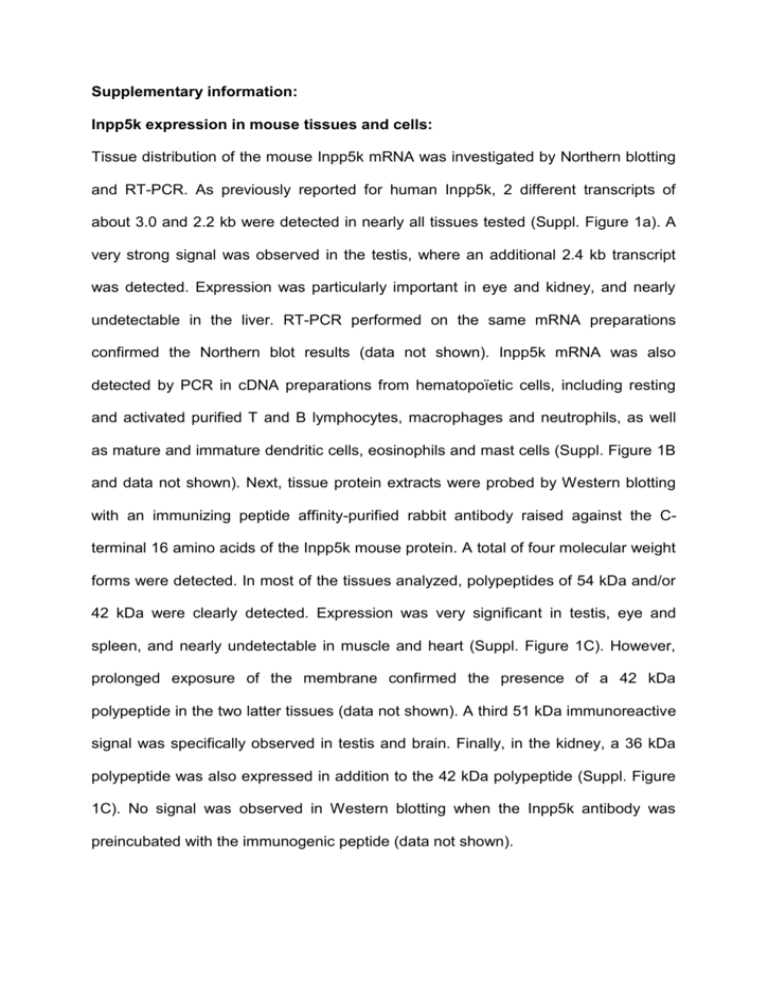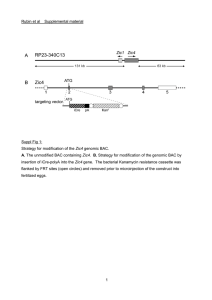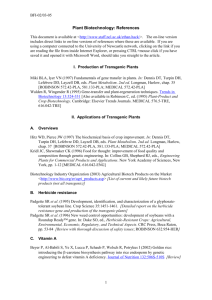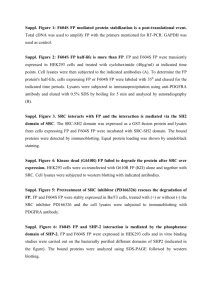Supplementary information: Inpp5k expression in mouse tissues and
advertisement

Supplementary information: Inpp5k expression in mouse tissues and cells: Tissue distribution of the mouse Inpp5k mRNA was investigated by Northern blotting and RT-PCR. As previously reported for human Inpp5k, 2 different transcripts of about 3.0 and 2.2 kb were detected in nearly all tissues tested (Suppl. Figure 1a). A very strong signal was observed in the testis, where an additional 2.4 kb transcript was detected. Expression was particularly important in eye and kidney, and nearly undetectable in the liver. RT-PCR performed on the same mRNA preparations confirmed the Northern blot results (data not shown). Inpp5k mRNA was also detected by PCR in cDNA preparations from hematopoïetic cells, including resting and activated purified T and B lymphocytes, macrophages and neutrophils, as well as mature and immature dendritic cells, eosinophils and mast cells (Suppl. Figure 1B and data not shown). Next, tissue protein extracts were probed by Western blotting with an immunizing peptide affinity-purified rabbit antibody raised against the Cterminal 16 amino acids of the Inpp5k mouse protein. A total of four molecular weight forms were detected. In most of the tissues analyzed, polypeptides of 54 kDa and/or 42 kDa were clearly detected. Expression was very significant in testis, eye and spleen, and nearly undetectable in muscle and heart (Suppl. Figure 1C). However, prolonged exposure of the membrane confirmed the presence of a 42 kDa polypeptide in the two latter tissues (data not shown). A third 51 kDa immunoreactive signal was specifically observed in testis and brain. Finally, in the kidney, a 36 kDa polypeptide was also expressed in addition to the 42 kDa polypeptide (Suppl. Figure 1C). No signal was observed in Western blotting when the Inpp5k antibody was preincubated with the immunogenic peptide (data not shown). GFP and Inpp5k proteins expression after pWPXLd lentiviral plasmid transfection in 293 cells: 293 cells were transfected either with the pWPXLd/GFP/Inpp5k plasmid containing both GFP and Inpp5k cDNAs, or with the pWPXLd/Inpp5k plasmid obtained after Cre recombination. As expected, cells transfected with the pWPXLd/GFP/Inpp5k plasmid were fluorescent but did not express the mouse Inpp5k protein, while pWPXLd/Inpp5k-transfected cells were not fluorescent but did express a 44 kDa Flag-tagged Inpp5k protein (Suppl. Figure 2). Characterization of GFP- and Inpp5k-transgenic mouse lines: Southern blot analysis using several restriction enzymes and a radiolabeled mouse Inpp5k cDNA probe revealed that, as compared to non transgenic control DNA, DNA extracted from both transgenic lines had an extra signal which corresponded to a unique transgene integration site in the genome (data not shown). In order to remove the GFP cDNA out of the genome and to induce the expression of the Flag-tagged Inpp5k protein, males from both lines were crossed with female PGK-Cre mice which express the Cre recombinase in all tissues early during embryogenesis. Immunoprecipitation followed by Western blotting revealed that no transgenic Inpp5k protein was expressed in the heart of GFP mice before Cre recombination, and that Cre recombination induced the production of a 44 kDa Flag-tagged Inpp5k protein only in Inpp5k mice (Suppl. Figure 3a). Similar results were obtained on kidney protein extracts (data not shown). Western blot analysis of the 44 kDa Flag-tagged transgenic Inpp5k protein in multiple tissues showed that the expression was rather ubiquitous (Suppl. Figure 3b). Finally, PtdIns(4,5)P2 and PtdIns(3,4,5)P3 phosphatase activities were analyzed in kidney protein extracts from non transgenic control and Inpp5k transgenic lines (Suppl. Figure 3c). Phosphatase activity was 2 significantly detected in the total kidney protein extracts from both Inpp5k transgenic lines after immunoprecipitation with the anti-Flag antibody. These data reflect thus the phosphoinositide phosphatase activity of the transgenic Inpp5k protein only. As expected, no significant phosphate release was detected in non transgenic control mice (Suppl. Figure 3c). In the anti-Inpp5k immunoprecipitates, phosphatase activity was detected with both substrates in non transgenic control mice, indicating the presence of the endogeneous Inpp5k protein. However, in both Inpp5k transgenic lines, activity measured with the two substrates was higher than in control mice, reaching significantly higher levels in transgenic line B kidney extracts (Suppl. Figure 3c). Preincubation of the anti-Inpp5k antibody with the immunogenic peptide before immunoprecipitation nearly completely prevented phosphatase activity from kidney extracts (data not shown). 3










